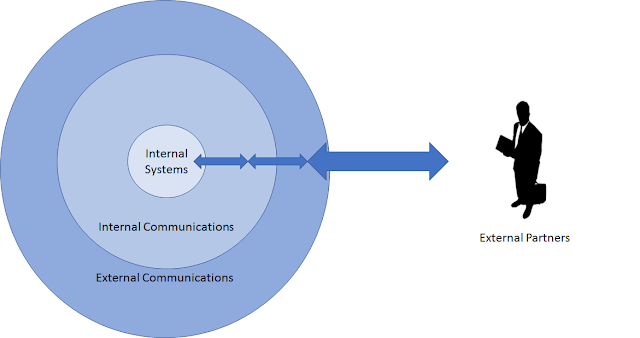Step into the cloud with PureApplication services
I spoke recently about PureApplication Services and the news that you can now use the magic behind PureApplication Systems (the patterns!) off-premise in the SoftLayer data centres.
As it’s still relatively new to the market, I thought I’d take a bit more time to explain what it is, the drivers behind using the Service and the benefits it delivers.
Here are some answers to some the questions I’ve heard so far:
What Is SoftLayer Compared With PureApplication Services?
SoftLayer is the company that IBM bought out early in 2013. They are a worldwide highly respected data centre company. IBM is investing around $1.2 billion into these data centres by creating more of them and enlarging the ones that they already have. They are creating more of them to get a global reach and also to ensure that they can meet local regulatory requirements (for instance did you know that Saudi Arabia won’t let local bank account data outside its shores?).
If SoftLayer is the data centre, then PureApplication Services is the service that runs in the data centre.
How Exactly Does PureApplication Services Differ From PureApplication System?
OK, let’s get the terminology laid out. PureApplication System is the converged infrastructure offering that IBM has been selling for a number of years. It includes the compute nodes, network, storage and management all in one box (albeit a rack sized box !). Included within the box is the Patterns of Expertise capability, which includes virtualisation, that allows you to model your solution topology environments and then deploy and manage them on the converged infrastructure.
PureApplication Services (note “Services” for the off-premise solution and “System” for the on-premise solution) is the name IBM has given to the identical virtualisation and modelling service that they have in PureApplication System but they’ve hosted in SoftLayer data centres. But, let’s be clear, IBM has not shipped out a load of PureApplication Systems to the SoftlLayer data centres. What IBM has done is put the Pattern of Expertise technology out there running on the usual data centre infrastructure like blades etc. This leaves you with the capability you need to deploy your environments but without the management of the actual infrastructure.
I Don’t Want To Put My Workloads Into The Cloud On Shared Infrastructure
OK, the key thing here is that the more security conscious of you will say that this is off-premise so I’m not touching it. However, the service that IBM is giving you is not the same standard as someone like, say, Amazon usually gives you. This is the typical higher quality service that you expect from IBM. The PureApplication Service offering ensures that you are running on your own dedicated kit. So you won’t be sharing infrastructure with your competitor! This is far more like a typical off-premise solution with dedicated infrastructure, it’s just that you’re getting all the benefits of pay-as-you-go cloud capabilities.
Because the virtualisation and modelling engines are identical both on and off-premise you can move complex workloads from on-premise environments to off-premise and vice versa, very simply and with the same user experience each time. You can get your workloads deployed faster, with less risk and better success of the execution of those workloads.
You really do get to enjoy all the same benefits of PureApplication: one click delivery of full development, test or performance environments without relying on manual processes and without the risk of errors creeping in, without the need for the converged infrastructure/hardware.
When Would You Want To Use PureApplication Services?
PureApplication Services is ideal for customers who need more flexibility in their infrastructure models. For example, customers might want to consider a model where they develop patterns off premise and then bring them in-house when they’re confident that they meet their needs but want to reduce cloud rental costs.
Another example might be a large organisation who’s trying to reduce the costs associated with their under-utilised disaster recovery environments. They would now have the flexibility to choose to run primary workloads on-premise using patterns and disaster recovery and backup workloads on PureApplication Services using the exact same patterns.
If you are extremely risk averse then you may decide to keep some applications off premise and some on premise for risk management e.g. keep sensitive customer data on-premise and just do development and some test off-premise. The key point being here is that because you are using exactly the same topology patterns on and off-premise you can be assured that the applications you developed off-premise will run identically on-premise and this gives you a clearer route-to-live.
One of the most interesting features of having this truly hybrid cloud with a global reach is the possibility of growing your organisation without having to open up your own data centres in remote parts of the world.
Already there are a number of organisations that have used PureApplication on Softlayer for this exact purpose. They have their core data centres on-premise where they house their current workloads but when it came time to open up new branches in distant lands, they chose not to invest in a new data centre but to rely on IBM having done the legwork for them.
They didn’t need the same number of servers in the remote sites as they do locally as only some of their applications need to be locally accessible. Putting exactly the same topology pattern that they used on-premise in a new, remote, location was far easier than they could have imagined.
What Are The Benefits Of PureApplication Services?
So, to summarise the benefits I’ve just discussed:
- Dedicated hardware with no infrastructure sharing
- Develop rapidly off-premise and bring the exact same topology in-house if required.
- Keep your core systems on-premise and use the cloud for HA and DR purposes.
- Allows you to cater for peak demands without the needs for additional capital expense
- Expand your global reach without expanding your global data centres


Comments
Post a Comment